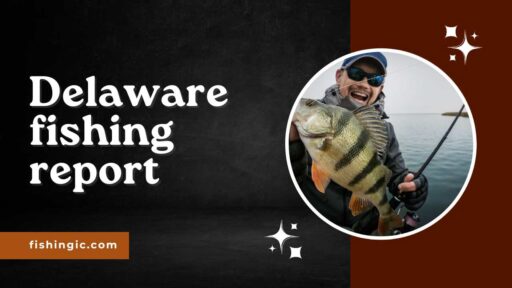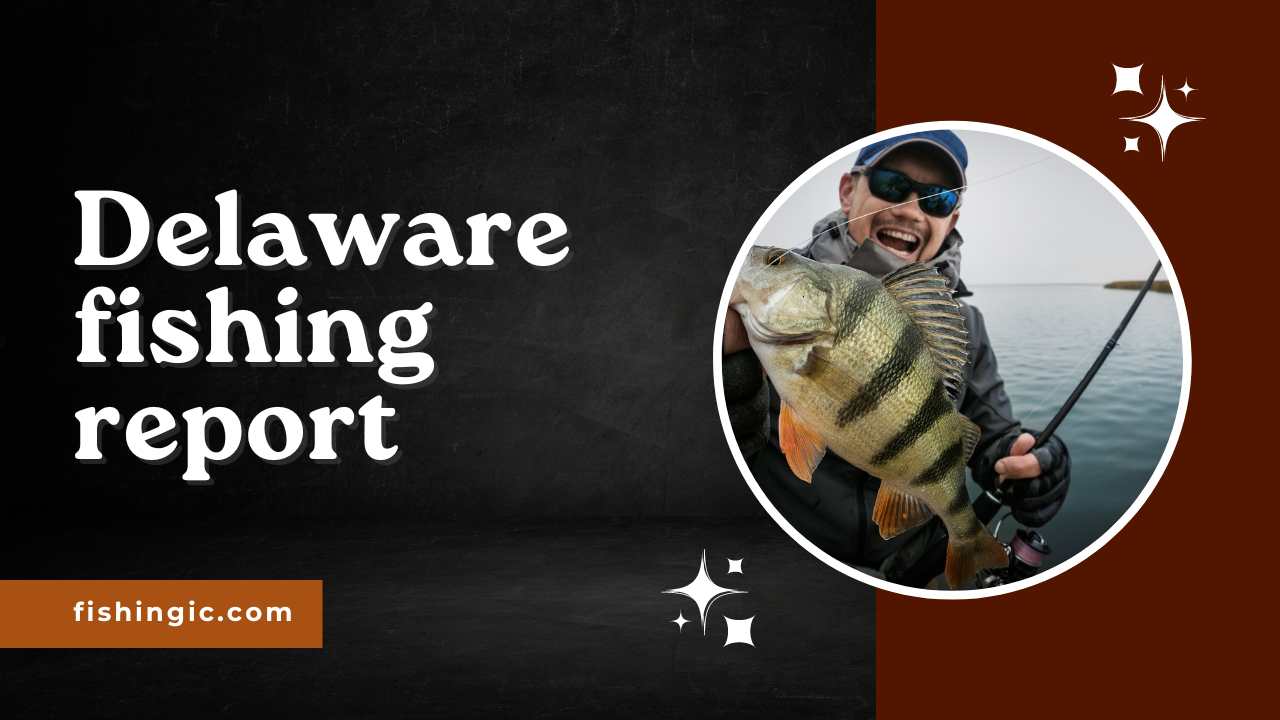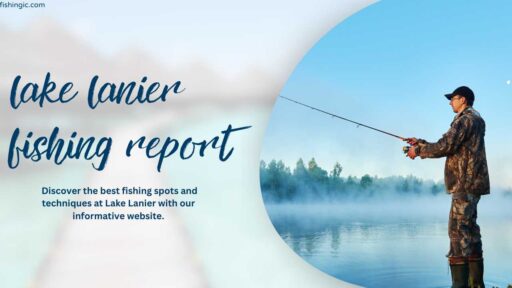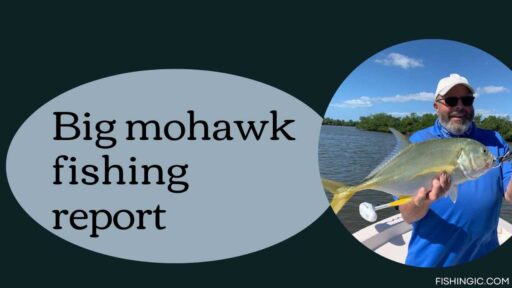Stay up-to-date with the latest Delaware Fishing Report conditions and tips for a successful angling adventure. Your ultimate guide to a rewarding fishing experience.
Staying updated with the Delaware fishing report is not just about knowing what is going on in local fishing. It is a means of gaining an edge in it. The report contains data and reports from many factors. These include Weather, water temperatures, tides, and fish movements. These facets are critical. They affect how fish behave, and so determine your chances of success.
Some fish prefer certain temperatures. They will move or become livelier if they are met. Armed with this information, I can plan my trips accordingly. Similarly, tides affect fish behavior. They know the difference between coming home with a cooler of fish or just another fish story.
It’s our responsibility as anglers to ensure sustainable fishing practices and abide by set regulations. I consult the Delaware fishing report often. It helps me stay up-to-date on conservation efforts and regulations. The report often has size limits for specific species. It also covers when closed seasons or areas are imposed. It even has catch limits for my compliance. These rules help preserve Delaware’s aquatic ecosystems.
Delaware’s fishing offers variety depending on the season. Spring reports show fair catches of stripers at night in the Indian River Inlet, with some big fish reported. Flounder fishing in back bays is productive using minnows, shiners, squid, or artificial lures. Black drum action is ongoing in Delaware Bay. Crabbing is also good near Gull Point and Oak Orchard areas. Remember to check regulations as flounder size limits change throughout the year.

Credit: pexels.com
How do I access the Delaware Fishing Report?
Accessing the Delaware fishing report has never been easier, especially with today’s modern technology. The internet is very fast at giving recent information. You can find reports on many websites.
These include state government pages, local fishing forums, and fishing apps. You may also want to bookmark them on your computer or phone. This way, you won’t have to remember them all when you need this info. Also, I always get timely updates on that matter. I do so by subscribing to newsletters from local bait shops or angler organizations.
To get the report, it’s best for people who love personal treatment to visit local bait and tackle shops. There, they can tap into the grapevine of the local anglers. These face-to-face interactions often reveal some tips and tricks that are not found in the official reports. I also turn to social media platforms. I tend to follow local fishing groups on platforms like Facebook or Instagram. They give me real-time updates and personal experiences from people who are currently out on the water. These are more likely to be up-to-date than other information sources if I need any updates while in transit.
How To Read A Fishing Report
The Delaware Fishing Report offers valuable information, but it is important to understand how to read it. The report normally has sections about location, species, types of bait used, and successful ways of catching fish. Other details include clarity, temperature, and forecasts.”
In reading the section on locations, I am not looking for just somewhere to catch fish. Instead, I try to understand why a specific area is producing catches. Are there underwater structures in these places? Are there strong currents? Is this the time of year when schools of fish migrate through here? With this knowledge, choosing a fishing spot becomes easier.
The species section helps me know which kinds of fish are active and being caught at that time. This helps me determine what equipment and bait should be used for my next outing. If a species is reported as biting live bait, then before starting your journey, you must ensure that you have enough live bait.
Lastly, I pay close attention when reading the techniques section. It often discusses successful ways people have fished. Whether trolling, casting, or bottom fishing, knowing which tactics work provides me with a starting point once I am out on the water.
What Are Important Things One Needs To Look At Based On The Report When Planning To Go Fishing?
There are several key factors that must be taken into consideration when planning a fishing trip in order to make it successful. First of all, I need to look at the weather forecast. Weather not only affects my comfort but also fish behavior. For example, some species might bite more aggressively before a storm due to the drop in barometric pressure.
Then, I take note of the tide charts. When it comes to coastal and estuarine locations, tides can have a tremendous influence on where and how fish feed. In most cases, I try scheduling my trips during high tide or moving water periods since they usually coincide with times when fish are most active.
Another factor is water temperature. Fish are cold-blooded animals; hence, their activity levels depend largely on the temperature of the water. This information is usually provided in the Delaware fishing report and helps me target species currently known to be active.
Finally, I consider the moon phase as well. To some, this may seem superstitious, but moon phases affect fish, especially in saltwater fishing, where it is being practiced. A full moon or new moon creates stronger tides that eventually result in better conditions for angling.
Changes Between Seasons In The De Fishing Report
Fishermen should know about season changes. They are one of the main topics in Delaware’s fishing reports. Different strategies have to be used each season due to different focal species.”
Shad and striped bass runs can provide thrilling action in spring when the waters warm up, and this is often outlined in the report. Flounder and bluefish become more significant during the summer,
so I adjust my gear and techniques to target these species. During such transitions, this report remains helpful. It also tells me when to change my mind about species.
Many anglers, like me, love fishing in autumn. Fish have feeding frenzies before winter due to the cooling water. At this particular period of time, Delaware fishing report have many locations where one could exploit for a great catch.
Winter fishing poses a challenge due to cold Weather, and there are few fish that are active at this time. However, a source like a fishing report can tell you which species are biting. It can also show you the best spots to find them. It focuses on deep water zones where they hide in winter.
Decoding The Report
Reading a Delaware Fishing Report is an art. Over time, I’ve learned some useful tricks that let me fully use its information. The first thing I remember is learning how to see patterns in the reports.
If there have been several mentions of a specific bait or location in consecutive reports, then there must be something going on.
Reading between the lines is another tip; sometimes, what people don’t say could be very important. This might suggest that I switch from targeting such fish entirely to another species if suddenly it does not appear on the report.
Another way is to just keep my eyes open. I will look at these reports and also use personal observation experience. Every time I come to a new place for fishing, I compare it with those statements made in that piece of writing. There is no fear when altering my initial strategy if anything seems unfit. On many occasions, this factor alone makes all the difference between an excellent day out or simply going home empty-handed.
It should not be forgotten that the report serves as a good source of information, but not all. Even though it offers some valuable data, I never undervalue my personal experience and time spent on water.
Fishing Report Highlights
Once in a while, the Delaware Fishing Report will have stories about remarkable catches. It will also cover newly discovered fishing hotspots. These highlights can serve as a beacon for anglers looking for an exciting opportunity.
However, I read such remarks with caution. This is because hotspots can become congested within minutes, and overfishing could turn off the bite.
Still, such big catches may also show patterns. These patterns may happen in future fishing trips. This means that if certain species are being caught more frequently, then these conditions are ideal for a certain type of fishery. Hence, similar sites that may be less popular or frequented should be targeted using this idea.
The mention of a trophy catch in that report is always electric to me, even today. That gives one hope and motivation just to remind oneself that any next record fish might still lie at the end of one’s line on any trip.
Species
Delaware waters teem with many species. Each has distinct traits that provide anglers with diverse fishing experiences.
Popular Fish Species in Delaware Waters
- Striped Bass
- Bluefish
- Flounder (Fluke)
- Blackfish (Tautog)
Tips For Catching Each Species Of Fish
Striped Bass and Bluefish: A solid option would be live bait like bunker or mullet. Trolling with lures or even poppers during surface feeds can also yield success.
Flounder Fishing Tips: Entice the flatties with a traditional bottom rig with a squid strip or minnow. Focus on sandy bottoms near reefs and wrecks. Tautog Bait: Green crabs or Asian shore crabs are tautog candy. Present your bait near the structure where these nibblers make their homes.
Rods: Match a medium-action rod with either a spinning or baitcasting reel that can handle the varied species that you are targeting. Lines and Leaders: 20 to 30-pound test line should be fine for striped bass and bluefish. Stronger leaders are also a good idea to fend off toothy critters like bluefish.
Lures and Baits: Use top-water plugs and soft plastics for smaller fish. Flounder responds well to bucktails, while tautog loves jigs made to look like green crabs. Accessories needed by anglers include pliers, knives, and landing nets, among others.
Rules Governing Angling Activities
We must comply with fishing regulations. This is not only about legality. It is also about maintaining fruitful fisheries. These fisheries will serve future generations.
Fishing Regulations in Delaware State
For the latest bag limits, size restrictions, and seasons for each species, check the Fish and Wildlife Division’s website. Pay close attention to areas prohibited by shipping zones as well as closures designed to protect spawning grounds.
Conservation Practices
The best practice is catch-and-release, mostly for the larger breeding fish. Use barbless hooks and handle fish with wet hands to minimize stress and injury. Further Reading for Anglers in Delaware.
In addition to the Delaware fishing report, there are many other sources of information I use in order to improve my fishing experience. Local fishing clubs and groups often hold meetings and events. There, experienced anglers can help me learn. They also participate in conservation efforts that I am passionate about.
Fishing expos and seminars are another great resource. These events often feature experts. They share their knowledge on everything from the newest gear to advanced fishing methods. Whenever possible, I try to attend these as they are a goldmine of information.
Lastly, if you are new to the area or angling itself, then connecting with a local guide is highly recommended. Guides can give personalized advice and show you the ropes, which will drastically reduce your learning curve.
Conclusion: On Using The Delaware Fishing Report
To sum up, it is important that I pay close attention to the Delaware fishing report before any trip out on the water. It is rich in information that, when used properly, can make fishing fantastic, but keep in mind that this alone does not tell all. Personal experience within our locality’s habitat would be equally significant.
Still, it is very important that each fisherman do their best to get the most from this resource. They must also do something to keep it. Through this, we can help ensure that Delaware’s fishing report stays true and useful to everybody.
After all, fishing is about adventure, communion with nature, and the tales we make. The Delaware fishing report helps us craft those stories a little better-armed, slightly wiser, and more hopeful for success! Therefore, take your tackle box, look up the last report, and let’s meet at the water – happy angling!






